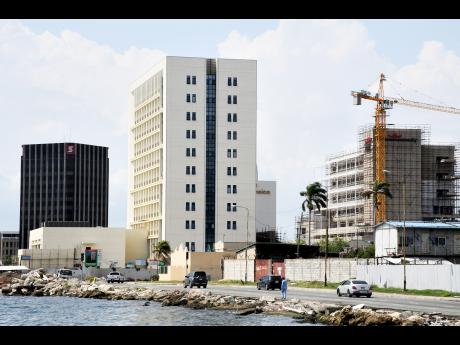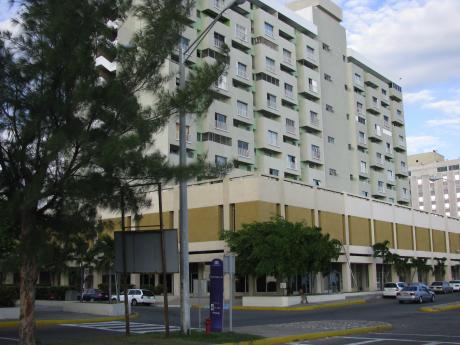High-rise worry - Commercial, housing development outpacing country’s infrastructure, says concerned stakeholder
President of the Jamaica Institute of Architects Christopher Lue is worried that the rate of development in the housing and commercial sectors is outpacing the supporting infrastructure and that failure to address the imbalance will exacerbate the already broken system.
He said that while successive administrations have fallen in love with the idea that development means having a Miami-like skyline, it behoves the pertinent authorities to consider building out the country's overwhelmed infrastructure, including modernising the fire brigade to respond to disasters of particular types and updating the building code to address the National Spatial Plan.
The outspoken Lue told The Gleaner that if Jamaica intends to copy developed cities as a means of showing its own level of development, it must also be willing to upgrade the inadequate essential infrastructure, including water supply, sewage, waste-water removal and treatment, as well as parking.
"I am not against development, but we have to make sure we get it done in a structured way. That includes making sure that a building that stands 20-storeys or higher has the requisite safety features," Lue said.
"These safety infrastructures must include sprinkler systems, fire-suppressant building materials, a well-equipped fire brigade with the wherewithal to reach the top floors of these buildings, and adequate water resources for everyday use."
Lue is concerned that while the much-needed focus is on the widening of major roadways across the Corporate Area, dubbed the 'Legacy Projects', other important pieces of infrastructure are yet to be improved.
He said that part of improving the system was the construction of the Soapberry Treatment Plant, which was built to increase the carrying capacity and handling of waste-water disposal.
INTRINSIC DANGERS WITH TOWERING BUILDINGS
Further making his argument, Lue, referenced the 23-floor Grenfell Tower disaster in London, England, that caught afire, killing 72 people and injuring a further 70 in June 2017, as a case in point.
"Grenfell was a building in a borough in London that was the city's affordable housing solution, poor people place where ethnic minorities lived. Surrounding it was a plethora of upscale developments," said Lue.
"Grenfell was an old housing building. It never looked good, and when the fire started, it was a quick burn. Circumstances definitely differ, but the point is that there are intrinsic dangers at play with towering buildings."
Recently, Jamaica's prime minister, Andrew Holness, noted that requests were coming in for approval for 20-storey buildings as developers seek to make better use of land in the capital.
Developers, Holness stated, are buying into the vision of the Government and have moved to capitalise on infrastructural works now under way to modernise the city of Kingston.
He said that if the issues of security and infrastructure are addressed, Kingston would have the potential to rival Miami with respect to vibrancy.
According to Holness, the Government is already taking on the infrastructure problem, and once that is solved, people will take the risk to construct buildings of that kind.


